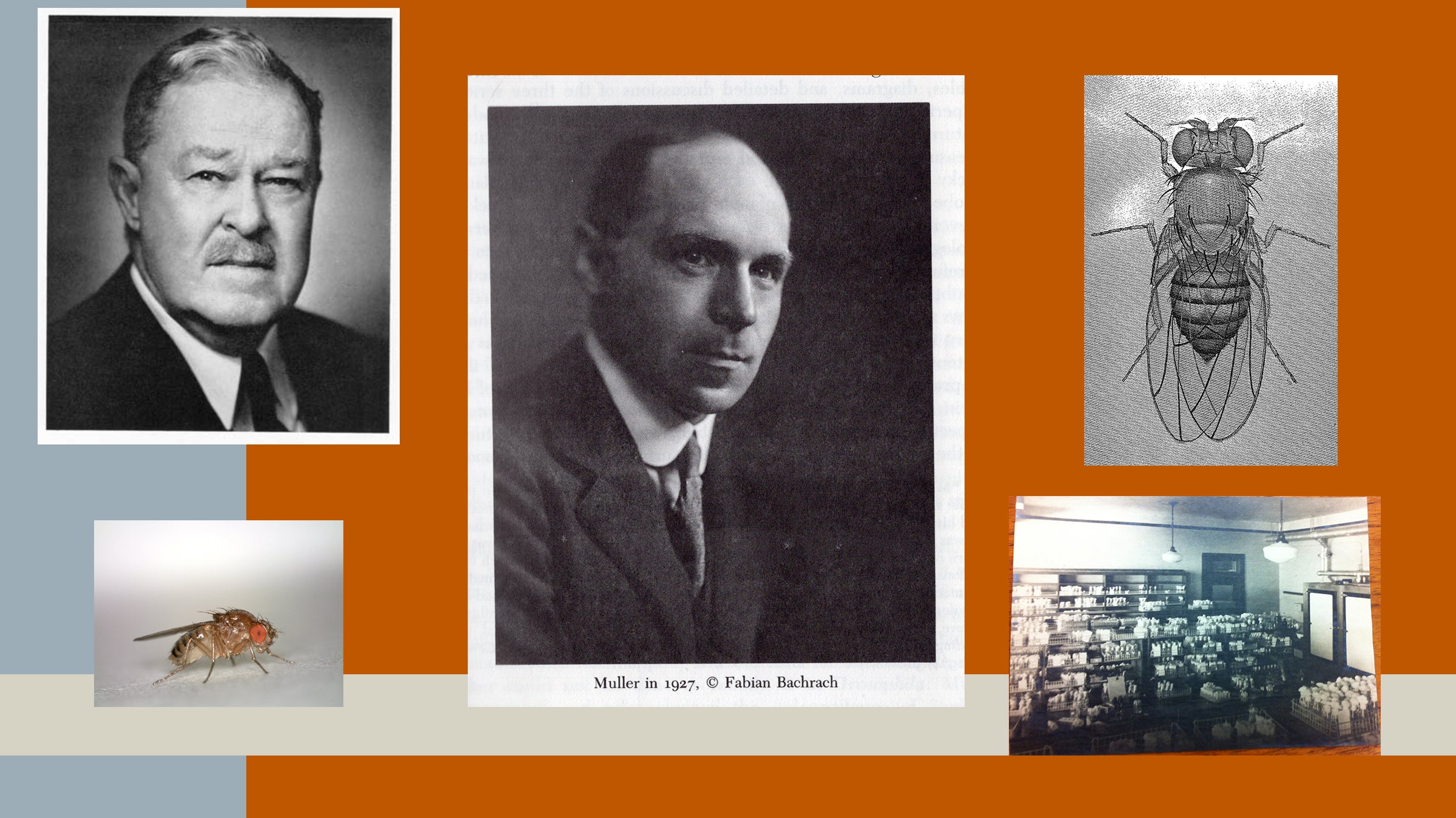
Left to right: John Thomas Patterson, Hermann Muller, fruit fly (Drosophila melanogaster), and Muller's lab at UT in the BIO building.
Part 1 of our UT Entomology History explored the formative years for UT entomology and the focus on ants, with William Morton Wheeler and his students scouring the wilderness of outlying Austin for new species. After Wheeler’s departure in 1903, it only took five years for a new direction to take shape, through the presence of John Thomas Patterson (1878-1960).
People that knew Patterson affectionately referred to him as “Dr. Pat,” and always used interesting language to describe him. James Crow (1916-2012), a former graduate student of Patterson’s and former professor of genetics at the University of Wisconsin-Madison, described Patterson as having tremendous drive and persistence, but also as “short and plump; he looked and behaved like a bulldog.” Robert Wagner (1918-2004), also a former graduate student and former UT professor of genetics, noted him as “sort of pear-shaped, but not a couch potato,” being full of energy.
That energy would serve Patterson well. He started at UT as an instructor in 1908 and in just three years was promoted to Zoology Chair. Crow stated Patterson was responsible for converting the Zoology Department at UT from obscurity into one of world renown. This was in no small part due to Patterson’s push for research on the genetics, evolution and diversity of the fruit fly Drosophila melanogaster.
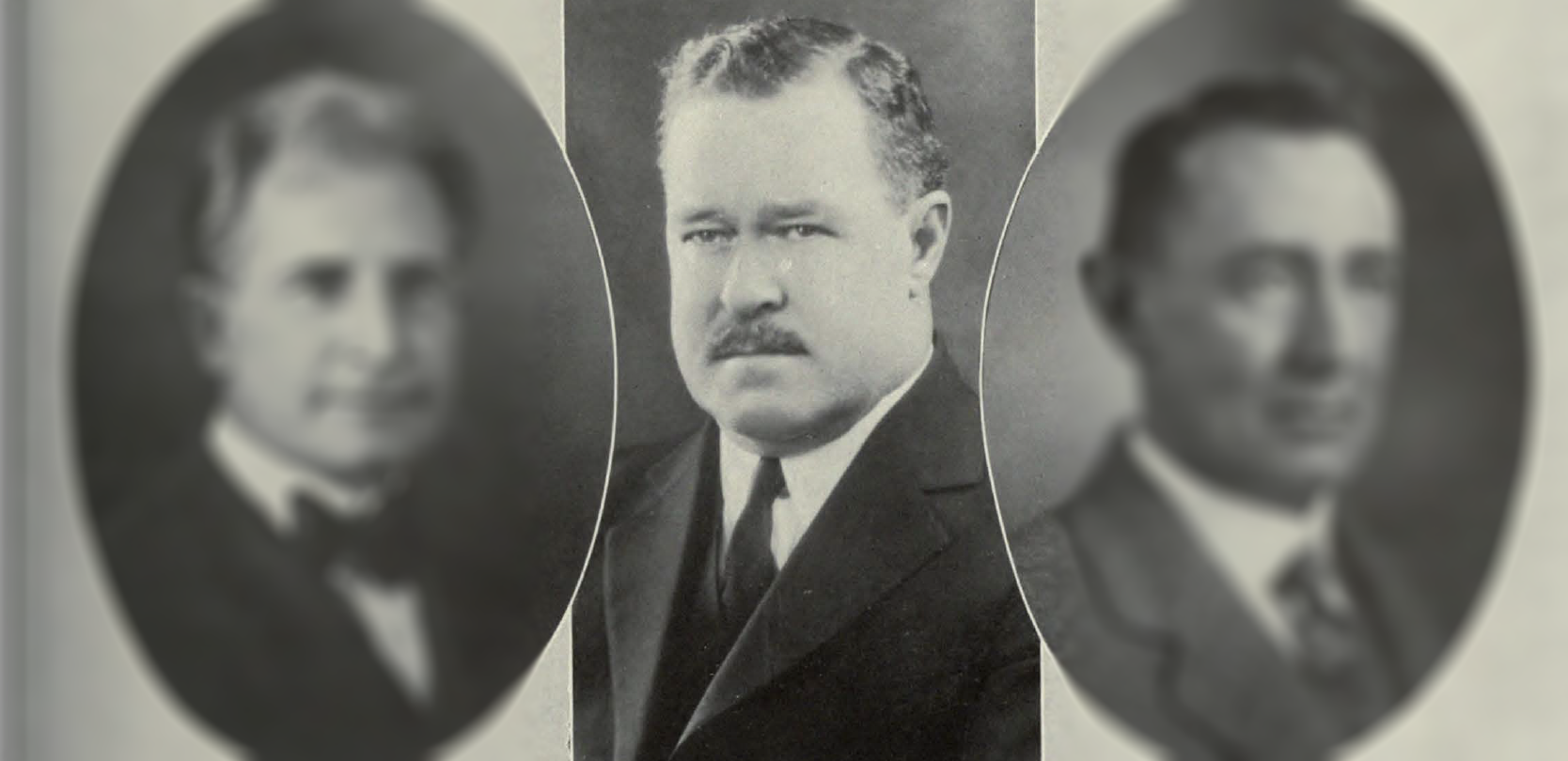
John T. Patterson. “Sandy-haired and short of stature, he had a ready wit, a love of repartee, and the ebullient temperament we traditionally associate with the Irish people.” - Theophilus Painter in a 1965 memoir about him. (Photo from 1931 Cactus yearbook.)
Patterson was trained as an embryologist. But during his early years at UT he became increasingly interested in the field of genetics and wanted to put Texas on the map in this area. He was familiar with the ground-breaking work of evolutionary biologist and geneticist Thomas Hunt Morgan and his students in the famed “Fly Room” at Columbia University. One of Morgan’s students in particular had Patterson’s eye: Hermann Muller. Patterson was impressed with him, and set his sights on convincing the young Muller to come to Texas. This would require arranging some perks for Muller: fully funding his research supply needs (not a common thing back then), providing an assistant, and eventually a larger Fly Room and a special smaller constant temperature room to keep the flies cool during brutal Texas summers. Of course, it was not lost on Patterson that in Texas things are bigger, and by giving Muller these things, he would essentially be outdoing Morgan’s tiny Fly Room.
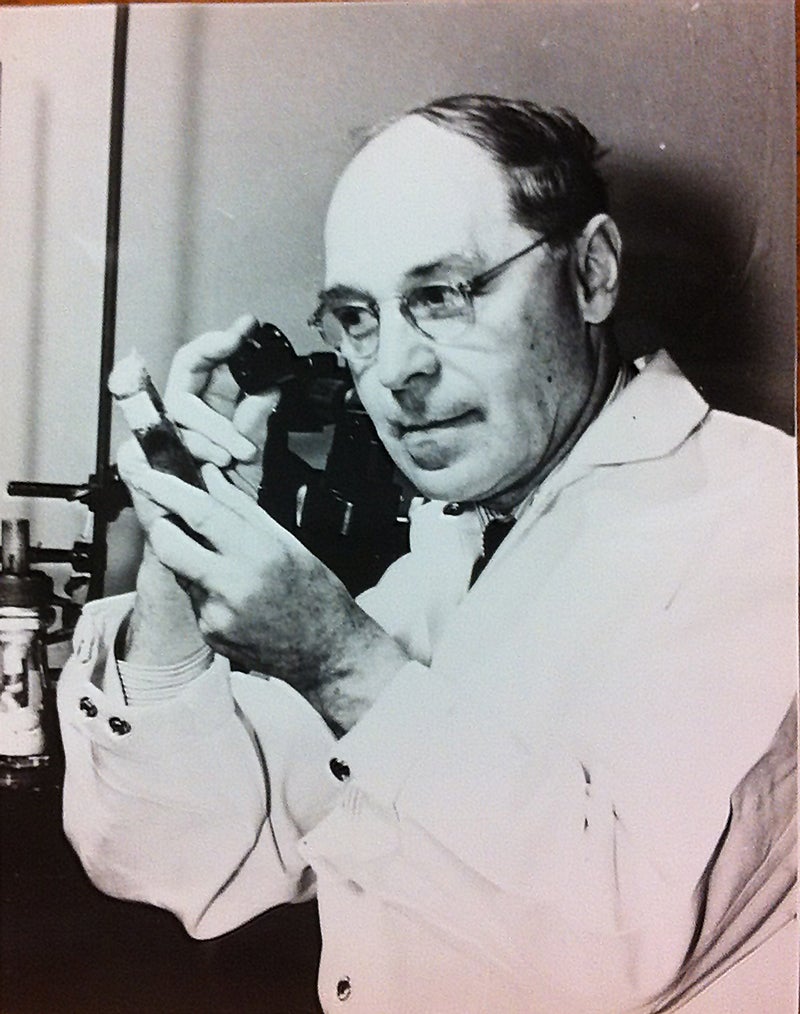
Muller using his jeweler's loupe to view his flies. (Photo in UT Zoology Archive, Dolph Briscoe Center for American History, The University of Texas at Austin)
Why were fruit flies the focus of genetics study? Drosophila melanogaster is a good species with which to study genetics. It has a short, simple reproduction cycle, allowing several generations to be observed in just a few months. With four pairs of chromosomes, it has relatively simple genetics. It has a compact genome that is easy to manipulate genetically. These flies are also easy to keep. They are small but not so small to see without a microscope, which allows researchers to keep millions of them in the lab at any one time.
Muller would come to UT in 1920 and leave in 1932. Not unlike the rest of his life, these twelve years were both professionally and personally intense for him. However, much of the research that led him to the Nobel prize in Physiology and Medicine in 1946 was done at UT in the 1920s. As Clarence Paul Oliver (1898 – 1991), a research assistant of Muller’s at the time, stated: “Muller reported results in 1927 which caused his reputation and the department’s recognition to take a big step forward. He showed that mutations of genic material can be induced in Drosophila by exposing them to X rays.” Muller did this by devising a mating scheme that simplifies tests for sex-linked lethals, or any visible sex-linked mutant. Along with later reports on the effects of radiation on genes and chromosomes, this discovery reset the direction of research programs in the department. Theophilus Painter, zoologist, professor, and eventual president of UT, as well as Patterson, switched to studies of Drosophila.
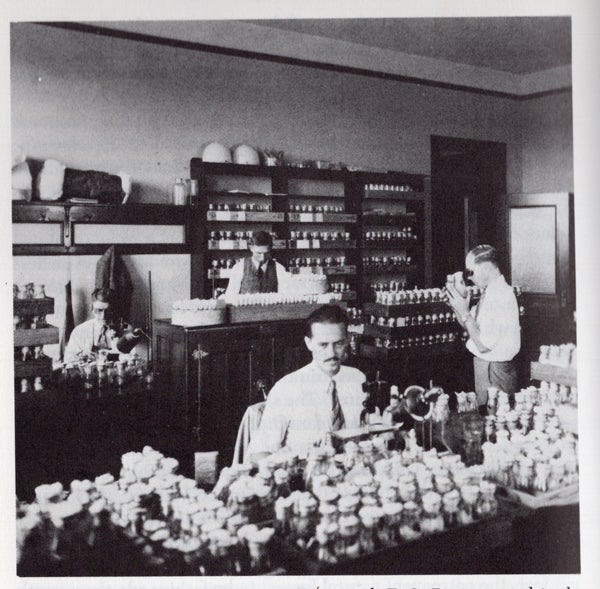
The "Fly Room" in BIO building on UT campus. T.S. Painter sits to the left in the back, W.S. Stone stands in the back, C.P. Oliver sits front, and Muller (right) views flies through his jeweler's loupe. (Photo from the Lilly Library, Indiana University)
Muller left UT in 1932. He was frustrated with the department, his marriage was strained, and he was feeling the heat from his political views aligned with Communism. He’d also received a Guggenheim Fellowship to study in Berlin. Only a few years later after Muller’s departure, Patterson would tire of Drosophila genetics. Activity continued in the Fly Room in the BIO building, largely through the work of postdocs and graduate students who would handle the tedious work of dealing with countless etherized flies under a microscope.
“It’s better to do research on Drosophila than on cattle if you need one hundred thousand animals for an experiment.”
- C.P. Oliver
However, it only took a few years for Patterson to return, rejuvenated by exploring speciation in Drosophila. He and his graduate students began ambitious collections of other Drosophila species, shifting the Fly Room from its focus on melanogaster to the most extensive survey of Drosophila species ever attempted. Another important figure in this group was Wilson Stone, who would emerge as the intellectual force behind many studies and a leader in the Zoology Department.
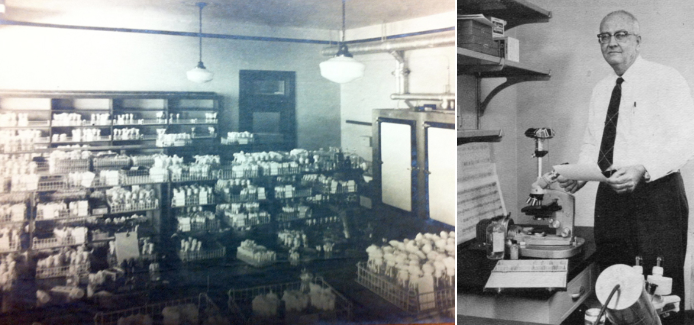
Left: Fly Room in the late 1940s. Right: Wilson Stone (1907-1968) a a member of the Drosophila group, who would emerge as a critical and intellectual force behind the experiments.
In 1951, the genetics group moved into the new Experimental Science Building (demolished in 2008). The ESB building provided each researcher a separate lab, and the dynamics of the old Fly Room as a singular location did not live on. Crow suggested Patterson was negatively affected by this move in that he probably missed the interactivity of the old Fly Room. “His research zeal quickly diminished,” Crow stated. Patterson would die at the age of 82 in 1960.
Well before his death however, other insects became research subjects at UT. Part three of this history series looks at mosquitoes, insects that we in Austin know quite intimately.
Special thanks to Dr. Mark Kirkpatrick for serving as editor for this piece.
Check out all of our UT Entomology History blogs here…
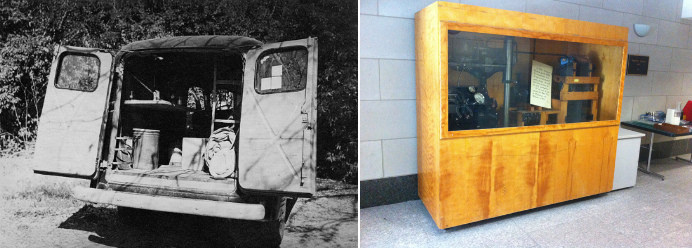
Left: The Drosophila truck of the 1940s used to collect various specimens in the US and Mexico. Right: The Xray machine used by Muller in the 1920s, now in the entry of the MBS building.
SOURCES
Crow, James. “Comment,” Discovery: Research and Scholarship at the University of Texas at Austin. 1994, Vol. 13 No. 4.
“Blast from the Past: J.T. Patterson,” August 21, 2008. The University of Texas at Austin, College of Natural Sciences (accessed online: https://cns.utexas.edu/news/blast-from-past-patterson)
Hales, Karen. G., Korey, Christopher A., Larracuente, Amanda M., Roberts, David M. “Genetics on the Fly: A Primer on the Drosophila Model System,” Genetics, November 1, 2015 vol. 201 no. 3 815-842; https://doi.org/10.1534/genetics.115.183392
Painter, Theophilus. “John Thomas Patterson, 1878 – 1960, Biographical Memoir.” 1965, National Academy of Sciences.
Oliver, C.P. “Zoology,” Discovery: Research and Scholarship at the University of Texas at Austin, Centennial Issue 1983, pg. 13-16.
Wager, Robert P. and Crow, James F. “The Other Fly Room: J.T. Patterson and Texas Genetics.” Genetics Society of America, 2001.



